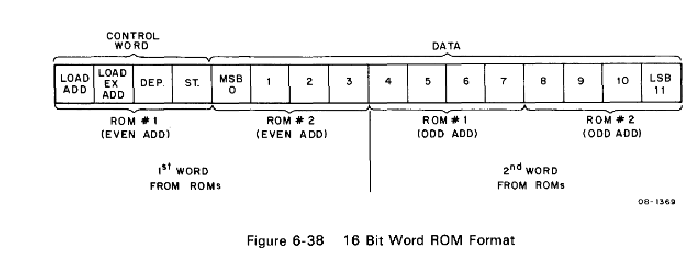I now tried another sketch, working better. Simple sketch from site ‘dances with ferretts’.
There were only definitions from data and address lines, so I’ve added the others.
After having fixed the baud setting from the serial output, I got a good dump with correct size.
The output has mainly 11 section of 2 rows of 16 bytes separated by 1 row of FF.
The middle is a bit different. But most bytes are 00.
At 400 octal there’s an ASCII string 032301.#
When converting it with the sixbit BCD character set from an IBM 704 (wikipedia: BCD (character encoding)) it reads
TST / L00010000.
Not sure if the dump is correct, so I want to do it with direct port manipulation.
I only found 2 examples, both with modern EEPROMs.
One puts CE and OE to GND.
The other puts them to D3 and D2. Obviously not Port D, but digital pins 2+3 (at PWM, physical pins 6+7, INT4+5) defined as output.
I don’t have WE but 2x CE. All are active low.
‘E1 must remain high one minimum positive pulse width before the next cycle can begin.’
Maybe that’s the problem.
The truth table is different than usual. I have 4 inputs (including A), a time reference and falling and rising edges.
I don’t know how to set that up (the simplest way) . Obviously handle E1 and E2 differently and not just put to GND.
And again timing questions. Where to use delays and which? Not a delay just while printing the output.
Bipolar PROMs have 4x CE. But I think mine isn’t bipolar.
